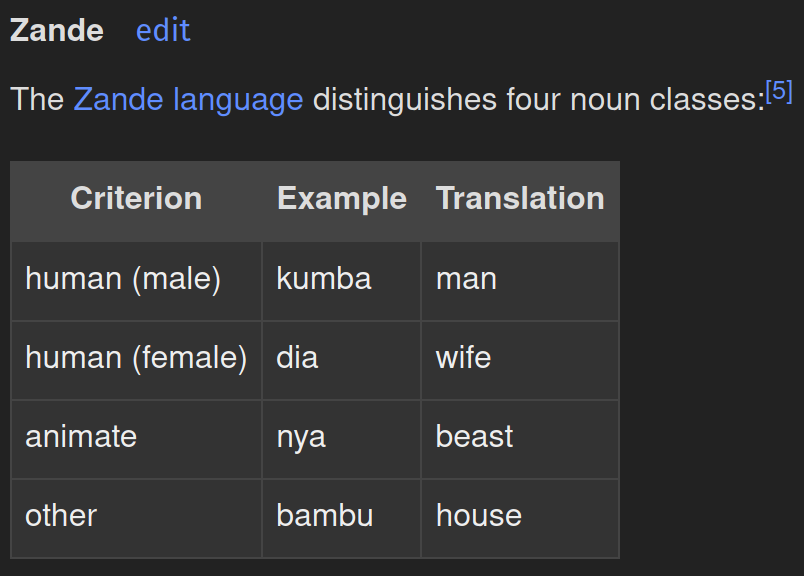Respect vs. disdain/intimacy, as with the T-V distinction in the second person, would be far more useful to me than gendered pronouns.
Also, this is fantastic:
The Ojibwe language and other members of the Algonquian languages distinguish between animate and inanimate classes. Some sources argue that the distinction is between things which are powerful and things which are not. All living things, as well as sacred things and things connected to the Earth are considered powerful and belong to the animate class. Still, the assignment is somewhat arbitrary, as “raspberry” is animate, but “strawberry” is inanimate.
Yeah, fuck you, strawberries!
The only thing sillier than having two grammatical genders is languages with three or four genders.
Artificial languages don’t have them. And there is a surprisingly serious plan to make lojban the international lingua franca, within a generation or two.
Many artificial languages do have them; they can serve important functions such as cutting down on referent ambiguity.
TIL. Which ones?

This is pretty neat IMO, especially in the sense of how every noun could have an animate or other/house classifier. Especially would be neat to know what they consider animate, like having its own internal life, like would rivers and storms and trees and bodies of water be animate, etc.


